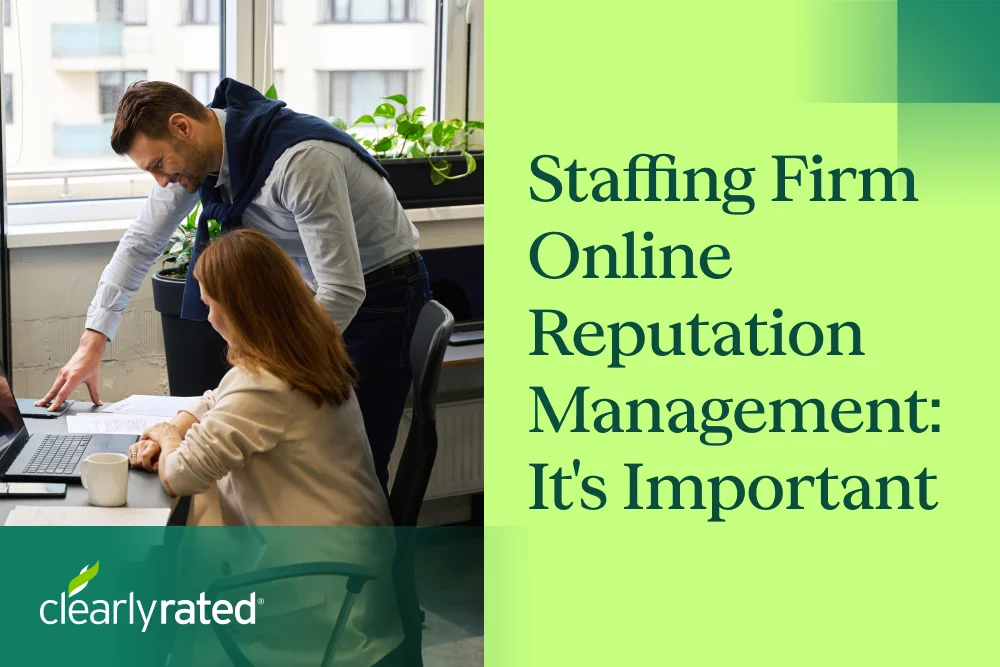Employee Attrition Rate: How to Calculate and Improve

- Attrition rate measures employees leaving without replacement and reveals deep issues with culture, compensation, or career growth; >20% annually is often a red flag.
- Voluntary, involuntary, internal, and demographic-specific attrition types each require tailored responses to address their root causes.
- Key causes include poor leadership, lack of growth, compensation misalignment, job mismatch, and external pressures like automation or competitor poaching.
- Combat attrition through cultural alignment, employee-focused onboarding, personalized learning paths, regular feedback loops, and exit interviews.
- ClearlyRated helps reduce attrition with smart survey design, real-time insights, NPS segmentation, and industry benchmarking to identify where employees are disengaging and fix it fast.
You spent years building a dream team that worked hard to turn your vision into a profitable business. But slowly, your employees—the very people who once shared your vision—begin to leave.
While losing an employee can seem like a natural part of business, when it becomes a pattern, it signals deeper issues at play. Employee attrition is a tricky thing to manage, and companies worldwide are struggling to navigate this issue. For additional guidance on how to keep your best talent, explore our comprehensive employee retention strategies.
In this article, we’ll explain the different types of attrition, why it matters, what causes it, and strategies to reduce it. We’ll also discuss what an acceptable attrition rate looks like and how to recognize when it’s time to take action.
What is the Attrition Rate?
Attrition rate, also known as employee attrition rate, is a metric used to measure the pace at which employees leave an organization without being immediately replaced over a specific period. It accounts for both voluntary separations (like resignations) and involuntary separations (such as layoffs or terminations).
The attrition rate helps companies understand the stability of their workforce and reveals issues with employee satisfaction, company culture, or management practices.
The evaluation of the attrition rate is usually handled by the Human Resources (HR) department to manage workforce planning, identify trends, and create strategies for improving retention.
Now, isn’t employee attrition the same as turnover? Let’s find out.
What’s the difference between attrition and turnover?
Though often used interchangeably, attrition and turnover refer to slightly different concepts in workforce management.
Attrition refers to the loss of employees over time (voluntary or involuntary) without being replaced. It is a passive process as the company either chooses not to or is unable to refill positions after employees leave.
Turnover, on the other hand, refers to the more active process of employees leaving and being replaced immediately. It also includes both voluntary separations and involuntary separations.
Both high turnover and attrition rates can indicate problems within a company and reveal different insights.
Attrition rates reflect long-term issues with retention, career growth, or company culture. Turnover rates highlight immediate concerns with employee satisfaction, recruitment, or workplace dynamics.
Now, another important concept in workforce management is employee retention.
What’s the difference between attrition and retention?
Attrition and retention are two sides of employee management, however, they focus on opposite ends of the spectrum.
While attrition refers to the gradual reduction in the workforce, retention is the ability of a company to keep its employees over time.
Retention focuses on creating a positive workplace, compensation packages, growth opportunities, and cultural experiences that motivate employees to stay for long.
Having understood the differences between various workforce management concepts, let’s take a closer look at the types of attrition.
Types of Attrition
Employee attrition can be of several kinds, each with distinct causes and implications for the organization. Below are the most common ones.

1. Voluntary attrition
Voluntary attrition happens when employees leave an organization by their own choice for higher compensation, better career opportunities, more suitable work environment, improved work-life balance, or other personal reasons.
For example, an employee who leaves to pursue further education or a new career path is voluntary attrition.
2. Involuntary attrition
Involuntary attrition, on the other hand, refers to employees leaving an organization due to reasons initiated by the company, such as layoffs, terminations, or retirements.
This type of attrition is outside the control of the employee and may result from organizational restructuring, downsizing, or performance issues.
3. Internal attrition
In this case, employees leave for other positions but within the same organization. While this doesn't result in a complete loss of talent, it can create gaps in specific roles or departments.
For instance, a senior developer moves to a managerial position within the same company, leaving their original position vacant.
On the other hand, external attrition occurs when an employee leaves to join another company, similar to voluntary attrition.
4. Demographic-specific attrition
Demographic-specific attrition occurs when specific employees, grouped by factors like age, gender, ethnicity, or job tenure, leave at higher-than-average rates.
For instance, younger employees may leave at higher rates, possibly looking for better career opportunities, while older employees might retire or leave for health-related reasons.
What do Employee Attrition Rates Say About Your Business?
While bringing in the right people is a reflection of your organization’s potential, keeping them speaks volumes about its present position.
High attrition rates can reveal underlying issues like poor management, lack of career growth, or an unhealthy workplace culture. If unresolved, these issues can damage your reputation and make it harder to attract future talent.
On the flip side, standard attrition rates indicate a well-managed and positive workplace where employees feel valued and engaged.
However, very low attrition rates can also be a red flag. It might suggest that employees are staying out of necessity, not engagement. This can lead to complacency and slow down the flow of fresh ideas and innovation at your company.
How to Calculate the Attrition Rate?
Just like any other business metric, attrition can also be calculated using a formula.
Attrition rate formula
Attrition Rate (%) = (Number of Employees Left ÷ Average Number of Employees) × 100
Step-by-step calculation of attrition rate
1.Determine the number of employees who left: This includes both voluntary and involuntary separations, such as resignations, retirements, or layoffs, over a specific period (e.g., a quarter or year).
P.S., The period depends on your specific industry and the speed of action needed to address attrition
2.Find the average number of employees: Calculate the average number of employees during the same period. You can do this by adding the number of employees at the beginning and end of the period, then dividing by two.
3.Apply the formula: Plug the numbers into the formula to calculate the attrition rate.
Here’s an example
Suppose 10 employees left during the year, and the average number of employees was 105. Then, the attrition rate is (10 ÷ 105) × 100 = 9.5%. This means the company had an attrition rate of 9.5% for that year.
What is an Acceptable Level of Attrition?
There’s no right answer to ‘What is a good attrition rate for businesses?’. The acceptable attrition level depends on different factors, such as industry, company size, job market, company culture, etc.
Here’s a general breakdown
- An attrition rate between 1-10% is typically ideal for many organizations, especially those with specialized skill sets or high investment in employee development.
- 10 to 20% may be acceptable for larger companies or industries where attrition is more common, such as retail or call centers.
- Above 20% (also exceeding industry standards) might indicate problems within the organization that must be addressed without any delays.
Causes of High Attrition Rates
To reduce attrition rates, it's important to understand why it's happening in the first place. Following are some common causes of high employee attrition.
1. Compensation and benefits
Employees are usually aware of their market value, and when their current compensation doesn't align with industry standards, they become prime candidates for job hunting.
This isn't just about base salary, but the entire compensation package including benefits, bonuses, stock options, and perks like insurance.
Regular salary reviews, health benefits, retirement plans, and performance-based incentives can help keep employees engaged.
2. Internal workplace issues
A lot of attrition stems from internal organizational issues.
Poor leadership and management, lack of recognition, and toxic work culture are major contributors. When employees feel unsupported, undervalued, or micromanaged, they become disengaged and more likely to leave.
A lack of career growth, unclear communication, and excess work stress further add to the dissatisfaction. Moreover, poor onboarding or failure to integrate employees properly into the company culture can also lead to early exits.
A McKinsey (2022) survey of 13,382 respondents reveals the top reasons employees quit. 41% cited a lack of career development, while 36% pointed to inadequate compensation. 34% left due to uninspiring leadership, and 31% felt their work lacked meaning.
3. External factors
It’s not always your fault. Sometimes external forces, such as the job market, legal changes, global events, or tech upgrades, can lead to higher attrition rates.
For instance, manual tasks like data entry, when automated, can lead to job displacement for employees in those roles. Similarly, if competitors offer better pay, benefits, or opportunities, your employees may be tempted to leave.
While this is outside of a company’s control, you can mitigate this by remaining adaptable.
4. Mismatch of job expectations and reality
Another common cause of high attrition is when there’s a disconnect between the job’s reality and expectations.
It may occur if the role is oversold during the recruitment process, leading to frustration when employees find the job doesn't align with their expectations. On the other hand, employees may join a role with unrealistic expectations, such as immediate career growth or more autonomy, only to be disappointed when those expectations aren't met.
Clear communication during hiring and a realistic portrayal of the role are essential to ensure alignment and prevent early attrition.
The Impact of Attrition Rate on Businesses
Employee attrition affects your business on multiple levels and its consequences can be broken down into two types –financial and cultural. Let’s break them down.
Financial consequences
High employee attrition has an immediate impact on your revenue. The costs begin with replacement expenses including recruitment, onboarding, training, and overtime to cover the employee's absence.
According to SHRM (2022), the cost of replacing an employee can range from three to four times the position’s salary. Once hired, new employees require training and time to become fully productive, adding to the cost.
For instance, if an experienced employee could complete a task in four days, a new employee might take a week. This decreased efficiency leads to project/service delays, ultimately affecting company output.
High attrition also disrupts customer-facing operations, harming client satisfaction. For example, when a support rep leaves, clients may face service delays or inaccurate responses due to the new rep lacking context, leading to dissatisfaction, reduced spending, or even churn.
Cultural consequences
When employees leave, it can create a sense of uncertainty and reduce morale among remaining team members.
They may also feel overburdened as the responsibilities of departing employees are often redistributed among the remaining team members, leading to burnout and stress. This can contribute to further attrition, creating an endless cycle.
Attrition also breaks the collaboration workflows and new joiners may take time to integrate with the existing culture. Moreover, high leadership attrition makes it difficult to maintain a consistent vision and strategy for the company.
Lastly, a company's high attrition rate can damage its reputation as a great place to work, making it harder to attract talent in the future.
Strategies to Reduce Attrition Rate
To prevent the severe consequences of attrition, below are some tried-and-tested and practical strategies.
_%20(1).png)
1. Build a company culture that makes people stay
58% of employees would switch jobs for a better culture.
Employees are more likely to stay in an environment that nurtures positive relationships, supports personal growth, and aligns with their values.
To build a healthy culture, focus on the following
- Define your core company values and stick by them
- Ensure leadership is knowledgeable, supportive, and unbiased
- Have a people strategy and implement it to show you care
- Be inclusive and ensure all voices are heard, valued, and respected
- Offer opportunities like team projects for employees to collaborate and share ideas
- Set up recognition programs to celebrate employee achievements and contributions
- Treat all employees equally, with fairness in opportunities, promotions, and everyday decisions
- Be transparent and share company updates, performance, and strategic goals
2. Offer the best employee experience from day one
Offer a frictionless employee experience from recruitment to onboarding, and beyond. When employees feel supported, respected, and cared for, they get comfortable in their roles quickly and perform at their best.
Ensure your onboarding process is thorough and welcoming. Start with a welcome email or a call that outlines expectations, key contacts, and the company mission. Assign a mentor/buddy to each new hire to guide them through the first few months.
Implement policies that allow for work-from-home options or flexible working hours. For example, offer employees the option to work remotely on Fridays.
Set up quarterly employee engagement surveys that ask people to rate their experience in specific areas like work-life balance, manager support, and recognition. Encourage open Q&A sessions with leadership. Create an action plan based on the results.
Clearlyrated’s survey platform handles everything from designing industry-specific employee engagement surveys to analyzing feedback for taking corrective actions that reduce attrition.
3. Build a future-proof workforce with continuous learning
With lack of advancement ranked as the second most common reason for leaving in Pew Research, it’s important to provide employees with the tools and support they need for development.
This helps them grow both personally and professionally, encouraging them to stay with your organization. Plus, when they acquire new skills and take on challenges, they contribute more to the company’s success.
hold one-on-one meetings and work with employees to create personalized growth plans. Identify areas for development, set achievable goals, and then track progress in quarterly reviews. You can also encourage senior employees to lead sessions and share their knowledge and experiences.
Set aside some budget to sponsor employees’ attendance of relevant workshops, online courses, or certifications. For example, pay for courses on LinkedIn Learning or certifications that align with their role.
4. Get to the root of attrition with exit interviews
Exit interviews are a great diagnostic tool that reveals the reasons behind employee attrition. By understanding the root causes, you can make adjustments to prevent future attrition.
Always ensure an exit interview of a departing employee is scheduled with HR in the last few days. Have a structured questionnaire that includes both open-ended and specific questions to uncover reasons for leaving, impression of the company, relationships with managers, etc.
Keep track of recurring feedback in exit interviews. Effective employee feedback from these interviews is crucial for identifying recurring issues and taking corrective action.
If multiple employees point out the same issues (e.g., management issues, lack of career growth), take immediate steps to address these.
How to Measure Success in Reducing Attrition
Now that you have implemented strategies to reduce attrition, the next step is to assess what worked and what didn’t. The aim is to combine both quantitative and qualitative feedback to get a clearer picture.
Define and track key performance indicators (KPIs)
To measure success, you need to define the right metrics and track them consistently. Important metrics include
- Attrition rate: Calculate this using the formula, (number of employees left ÷ average number of employees) × 100. A decrease in this rate is a clear indicator of success.
- eNPS: Employee Net Promoter Score lets you measure the overall employee loyalty and satisfaction. Conduct regular eNPS or pulse surveys to gather this.
- Retention rate: The flip side of attrition, this metric tracks the percentage of employees who stay with the company over a period of time. Calculate this using (number of employees at end of period − number of employees who left ÷ number of employees at the start of period) × 100.
- Time-to-fill: This helps understand how long it takes to fill a vacancy. A high time-to-fill suggests challenges in attracting the right candidates, which may be linked to a company’s reputation or recruiting practices.
- Time-to-exit: Measures how long employees stay before leaving. If this is low i.e. employees leave within the first few weeks, it could point to onboarding, job fit, or cultural alignment issues.
- Industry benchmarks: Compare your attrition rates to industry-specific norms to recognize whether your challenges are unique or part of a broader trend.
Track these KPIs quarterly or bi-annually, depending on when you implemented corrective measures. Now, how long does it take to reduce a high attrition rate? Allow at least three to six months for your strategies to take effect before evaluating their impact.
Create continuous feedback loops
A one-time survey or annual review isn’t enough to measure the ongoing success of your attrition reduction strategies. Continuous feedback ensures that you’re regularly checking in with employees, capturing their sentiments in real-time, and prepared to address their potential issues.
- Implement eNPS surveys every 1-2 months to track employee sentiment and engagement continuously. Keep your surveys short and focused to avoid survey fatigue. Also, learn how you can scale your feedback collection in this article.
- Encourage managers to hold regular group or one-on-one meetings with their team to gather informal feedback frequently. This creates a culture of open communication and proactive problem-solving.
- Once you've identified the issues affecting employees, assess whether the changes are feasible and then implement them. After making the changes, communicate them clearly to all employees to close the loop and show that their feedback has led to real action.
How Clearlyrated Can Help Reduce Attrition
Clearlyrated is a survey platform that lets you design employee surveys by including both multiple-choice and open-ended questions for gathering qualitative and quantitative feedback.
It offers a dashboard that analyzes all the feedback to calculate your Net Promoter Score. It further segments feedback based on employee perceptions across critical areas like community, fairness, recognition, advancement, and diversity, helping you understand where different groups may have different experiences.
With industry-specific benchmarks, you can compare your retention data against competitors and identify areas to minimize attrition.
For a comprehensive and integrated approach to managing employee retention and engagement, explore our ClearyRated solution for employee experience.
Book a demo with the ClearlyRated team to learn how companies have reduced attrition and how you can do the same.
FAQs
Can attrition ever be beneficial for a company?
Yes, attrition can be beneficial if it helps remove underperforming employees, reduces costs, or creates space for fresh talent.
What is considered a ‘high’ employee attrition rate?
An attrition rate higher than 20% annually is generally considered high, though it varies by industry.
What does a 20 percent attrition rate mean?
A 20% attrition rate means 20 out of every 100 employees leave the company within a year.
What does 80 percent attrition mean?
An 80% attrition rate means that 80 out of every 100 employees leave the company within a year, indicating serious retention issues.
FAQs


.png)






%5B1%5D.webp)







.png)











_%20The%20Ultimate%20Guide.png)





.png)




















%20in%20the%20Workplace.png)









.png)

%20and%20how%20can%20you%20increase%20it.png)
_%20A%20Step-by-Step%20Guide.png)

.png)
.png)




_.png)



%20in%202028.png)


_%20The%20Ultimate%20Guide%20(2024).png)











